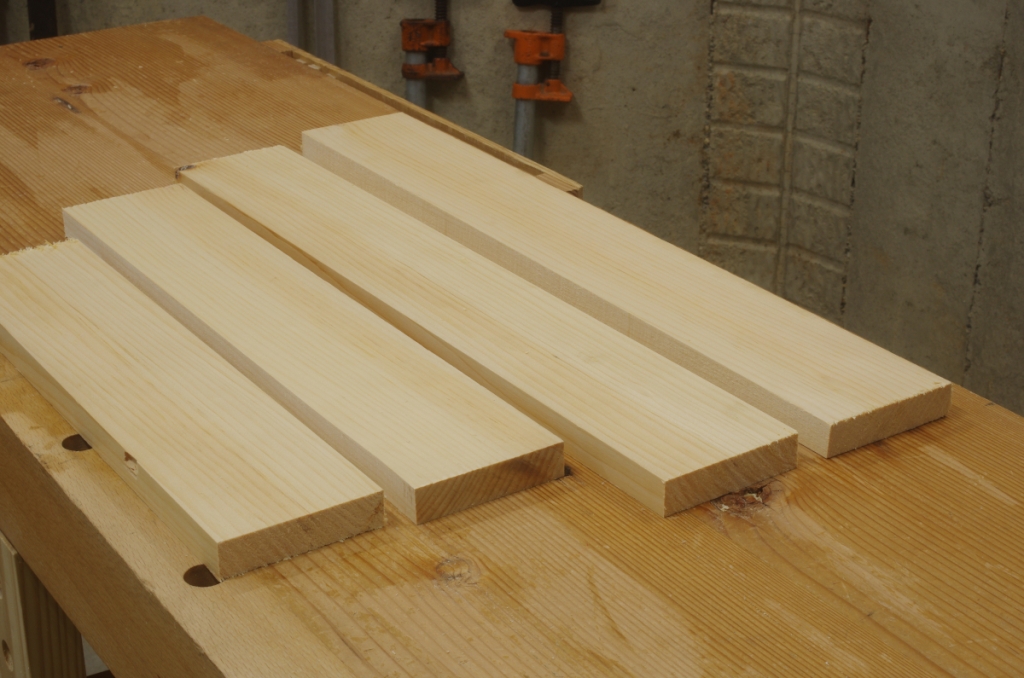After doing that tongue-and-groove stuff, I nailed on the bottom of the chest:

I guess I sawed off the ends with a panel saw. I don’t remember. In any case, I’ve been looking through not just the “ATC,” but also “The Woodworker” articles on traditional chests, and noted that some of the articles in the latter had said to use screws on the bottom. I went with cut nails, especially encouraged by the fact that I actually have some cut nails on hand.
Then it was on to the plinth and lower dust seal. These are just dovetailed bits and pieces and are pretty much standard fare. Pictures of those are a little later down.
The lid frame and panel presented another typical situation: determining which boards to use for the frame and panel. You normally want frames to be rift- or quartersawn because they’re more stable, and of course, those cuts are difficult to find if you’re just looking superficially (which is close to what I was doing when I bought most of the white pine that I have on hand). Fortunately, I had this one:

At first glance, this looks like a board with a lot of knots and an obnoxious cup. But slice out the center part, make some cuts here and there, and you get this:

That kind of riftsawn cut is what I was looking for.
I made the frame using through mortises (something I rarely do), did the joinery for the upper dust seal, and am now close to finished with the outer shell:

In a case of not following directions, there’s a small knot on one side here. It doesn’t show much sign of wanting to fall out, but if it does, I could repair it, or something. Because this is not a tool chest, it may not be important.
A look at the lid:

The upper dust seal is not attached or trimmed to final dimensions. This is because to really finish off the lid, I need to install the hinges, which I do not have at the moment. These are allegedly in transit.
I’ve already selected the wood for the sliding till runners and the sides of the tills themselves. I haven’t decided if I want to make some kind of divider in the bottom yet. Again, this isn’t for tools, so I don’t know if that kind of compartmentalization is appropriate here.
But it looks like I’m getting somewhere. In theory, this project shouldn’t take much longer.
